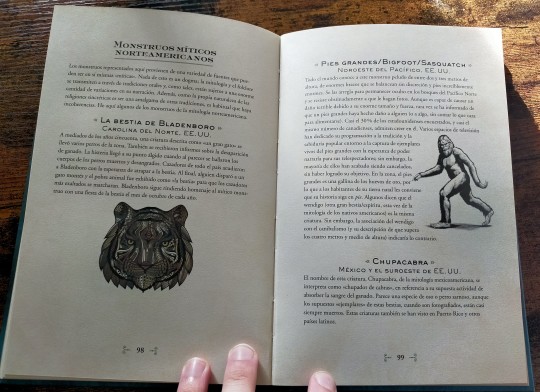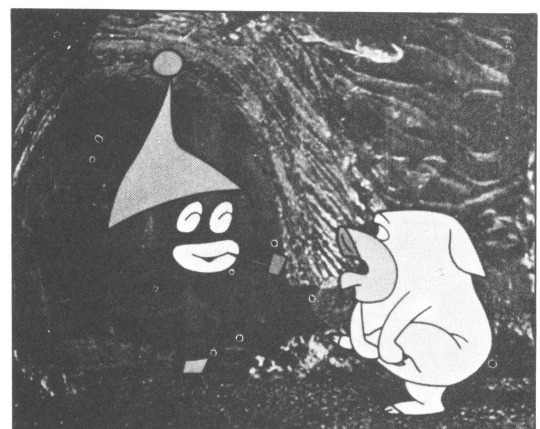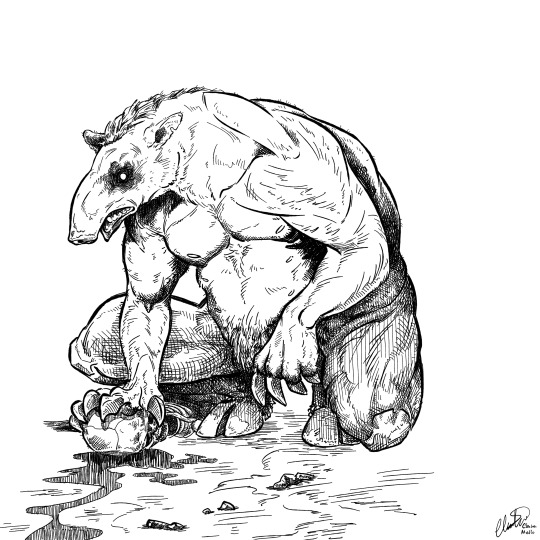#folclore
Text
slavic folclore dance 🐓
piece for @theftshrubbery through the ages collab !!! ;D

#throughtheagescollab#dream fanart#dreamwastaken#georgenotfound#gnf fanart#dnf#dreamnotfound fanart#dreamnotfound#georgenotfound fanart#slavic#folclore#gnf#art#illustration#illustrators on tumblr#jun arts
542 notes
·
View notes
Text

"Lal guitarra antes de ser instrumento fue un árbol y en él cantaban los pájaros.
La madera sabía de música mucho antes de ser instrumento".
Atahualpa Yupanqui.
Importante cantautor, guitarrista, poeta y escritor. Argentina, (1908) - Francia, (1992).
Fuente:Google.com
Fotografía: Pinterest.com
Sueños y fantasmas. El arte de soñar.
102 notes
·
View notes
Photo




Meu amor todinho 💗💗
96 notes
·
View notes
Text
My beautiful country, of traditional values and patriotic love 🇵🇹




#conservative#tradition#homemaker#tradgirl#catholic#tradwife#50s#christian#mother#wife#portuguese#português#portugal#estado novo#traditional values#traditional costume#rancho folclórico#folclore#folkwear#folklore#Spotify
17 notes
·
View notes
Text
Y bueno… a seguir esperando lo “inesperable”, lo que quizás nunca vaya a llegar. 
Lumiusier
117 notes
·
View notes
Text

October of Monster Gals day 16: Cuca
#mine#artists on tumblr#br art#inktober#monstergaltober23#inktober2023#digital art#monstertober2023#cuca#folclore#folclore brasileiro#brazilian folklore
25 notes
·
View notes
Text
Guys, this will be a post non-related to Walking on My Grave, but related to me as a writer, and turned to a specific side of Tumblr: any Brazilians that may follow me (I never talked about, I think, but yes, I'm Brazilian lol), because it relates to a Brazilian Crowdfunding platform. Everything related to Walking on My Grave will remain in its normal schedule (also, hopefully I'll have good news in the devlog next week)
(the post will all be written in english because I really don't want to switch lol)
So. In the end of 2023, I sent a short story to a competition by the Cartola Editora. The theme was "Folclore", with the anthology resulting called "Encanto".
Won't lie, I wasn't really expecting to be selected, the story I sent was old and I had to heavily edit and cut things to be within the length established. But it WAS selected!
Now the book is in Crowdfunding phase in Catarse, and we, all the authors selected, really would appreciate any and all help into reaching the goal <3

This is the cover, guys! It's amazing! It's all about our beloved and rich Brazilian Folklore, with many interpretations of known myths! I know of a story where the Boto and Iara go into a relationship. There is a Lobisomem Mineiro (Miner werewolf, non-brazilians, but miner really doesn't cover the culture of Minas Gerais, one of our states). My own story is along the lines of Urban Fantasy, narrated by Curupira and with Saci as a secondary character. And many others!
It's a beautiful book, the campaign's goal is not unrealistic close to some I have seen in Catarse, and we really need some boost.
The link for the Campaign is RIGHT HERE
Many, MANY thanks for reading the post, and apologies for "high jacking" the blog, since, well, here is mostly for IFs, but we, me and the other authors selected, really want to see this book be successful.
Again, thanks for the attention. Love you all, thank you for the patience, and I'll see you all in the next Devlog! <3
#crowdfunding#Encanto Mergulho no Folclore Brasileiro#folclore#brazilian folklore#financiamento coletivo
15 notes
·
View notes
Text
Follett




#witch#witchcraft#nature witch#forest witch#witches#witchblr#le feu follet#folclore#beginner wiccan#wichcraft#wiccan#wicca#paganism#dark aesthetic#gnomish#grimoire#nature magick#magick#magic#celtic#norse pagan#paganblr#hellenism#traditionalwitchcraft#spells#ancient culture#witchcore#pagan#witch illustration#illustration
21 notes
·
View notes
Text
What beautiful book I bought this morning


#books#folclore#mythology#magic#fantasy#booklr#bookblr#writers on tumblr#writeblr#reading#books and reading
11 notes
·
View notes
Text
crying because my stupidly broken maiden dps set could actually be useful now
#Jean Noelle it’s finally happening girls#I feel like i have been trapped in a dark tunnel for years and im finally feeling the wind of the exit#Idk a thing about furina personality and i don’t care#Its MY TIME TO SHINE#MY 4* atk scaling dps (kaeya and ning) and love for building healers are about to shine#I teared when i found out she can buff Noelle teams significantly my dear my sweet girl its time#Genshin impact#furina#folclore
16 notes
·
View notes
Text
Fun fact
I watched "The Shape of Water" and I was very happy to see the creature, he is a mythological being from Brazilian folklore, and by the way he has a name. His name is Ipupiara. It is a creature from the indigenous legends of the Amazon. There have been reports of this creature since the discovery of Brazil. Unlike what is said in the film, this creature was not seen as a God, but as a demon. He used to capsize indigenous boats and drown them in the waters of the Amazon basin, one of the main signs that someone has been killed by the Ipupiara and if the body is found without fingers,Eyes, noses and genitals. In the film this is maintained when the creature bites off the villain's fingers.
The word Ipupiara means "sea monster or sea demon" and comes from Tupi, there have been reports of this creature since 1500. And the existence of two other folk myths is probably based on it. Iara the indigenous mermaid who attracts fishermen with her song only to kill them. And the pink dolphin, which is simply a shape-shifting dolphin that can transform into a very handsome man at night, goes out to parties wearing a white suit with a hat, To hide the vent on your head. He often gets girls pregnant and then goes back to the river and never comes back.

7 notes
·
View notes
Text
Blaze's compendium entry #7: Never deny tobacco to the Saci Pererê

The Saci painted by Newton Cavalcanti to a stamp collection, 1974
Warning: Faith and religion are important real life topics, that tackles the culture and way of life of millions of real life people. It is a cultural expression, and must be respected by all means. Here, we use a video-game ( some times) and other media series only to ignite the flame of learning about the matter, using its art when well depicted, but we do this with all due respect to the cultures we talk here, grounded by real life sources, cultures and people. And i mean this with respect. Hope you all enjoy.
I can finally talk a bit about my home country myths after a brief trip around other countries mythical creatures. The Saci is an extremely popular creature in Brazilian Folklore, and if you are Brazilian i am absolute sure you have encountered its fabulous tales already.
The Saci is (regrettably) not represented in the Megaten game series, as most of characters from my Compendium series. But i want to pop this bubble going forward, and not be exclusively tied to this games, since Mythology is a much more expansive subject, and i like to use Megaten just as a welcoming gate to more casual audiences!
The Saci Pererê is a Brazilian folkloric creature, akin to the trickster ''gnome'' archetype, not considered an evil creature by any means, but very mischievous and a prankster. Normally depicted as a black skinned toddler smoking a pipe, red cap, and some times red clothing. It's most striking feature is his only leg, which he uses to jump around in a surprisingly agile manner. His mischief deeds are many, like he would tie horse's manes, startle them, move objects inside people's homes, etc... His most known power is his control of wind currents. He can summon small sized typhoons, in which the creature can ride on to flee or use to fight if he needs to.
The Saci is hyperactive and fast, always doing something. Some people can interpret this creature as malevolent since its mischief and pranks can cause serious problems, like stealing the breaks of a carriage. However, that's not exactly the truth. The Saci is, almost always portrayed as neutral creture, and it has been since it's inception into the public consciousness. As we can see, some times it can be treated as a little devil, but it's a beloved figure nonetheless.
The name Saci Perere cames from a theorized corruption of the Tupi Guarani words: Caa Cy Perereg, which means ''Jumping Evil Eyes''. That's stated on the book ''Saci Perere: An Inquiry Result''. I was not able to verify it independently because i do not speak Tupi, and i was also unable to find online translators. But, this wording is also verified by the book ''Geography of the Brazilian Myths'' by the legendary Brazilian folklorist Camara Cascudo, so it seems legit. There will be a lot of this book in this subject, because it is such a complete work and a vital piece of research for anyone getting into the topic. [2], [1]
Cascudo does a great scholar work, going as far as giving dis-ambiguity of the Saci from other myths, and even animals that could be related to the legend.
Context: The Tupi Guarani, or just Guarani are the biggest native population living in the territory of Brazil today. They live more from the central region to the south and south-east, relatively far away form the Amazon forest in the northern regions. In general they are polytheists, and today are around 57.000,00 people. [This is sourced by the IBGE, Brazilian Institute of Geography and Statistics]
But, even being a very popular creature in the local folklore, and even transcending the boundaries of its homeland some times, (as we will see ahead) the Saci has a relatively recent history. It's impossible to pinpoint exactly who and how this legend started. But we know it started on the southern and south-eastern most regions of the country, but there's no mention of it on the old fables from native people, which makes scholars think that the Saci is not that old as its relatives of the regional folklore.
A fact that corroborates this assertion is that, besides being a very popular folklore in Brazil, Saci is absent form any mentions to ancient sources, starting to appear more from the 18th century and above. [1]
The name Saci is not stranger to Folklore in the region though. Saci is also the name of a bird, Tapera Naevis, which has a related myth according to the Brazilian National Museum. The Saci bird is treated sometimes like a demon, that can confuse travelers with its singing. Another local legend has that this bird can suck the dead's souls. Al tough both of those claims are backed, i personally did not hear about it until researching for this topic. [1]
This particular bird its said to be seen as a bad omen to this day, in the Amazon region. This is pretty far away from where the folkloric Saci was born, but it seems that a common association with the bird is that it asks for tobacco to its pipe, just like the Saci does. This animal has the habit to sing during night times, so the legend says that it means it wants tobacco. If you actually replies to it, its said the bird will come after your promisse. [1]
This particular bird can also be connected to another folkloric tale, this time from the northern regions of Brazil, a witch called the Matinta-Pereira. This is a particular demonic witch, that can transform itself into the Saci bird, (Tapera Naevis) to get offerings from residents of villages. When her demands are not met, she causes bad things to happen. She also wears a red hat, and her name also bears the ''Perereg'' wording from before. Scholars believe that this is because this bird sometimes jumps in one leg, and has red feathers in their heads, which would also make senses with the Saci! I personally could not find any visual registry about it, but i am sure most of birds some times do this kind of stuff. [1]
The Matinta eventually became a generic name for haunting and supernatural ocurrences in the Northern regions, while the Saci became a thing in the southern regions. The Matinta became more associated with its cursed singings, as the book mentioned before says: ''It trespasses villages with its haunting screams. It will not attack or go after people, thought.'' [1] It kinda resembled me personally of the European Banshee, which also caused misfortune and disasters, and possesses a terrifying cry.


The Saci bird and the Matinta-Pereira witch. (Art i got from Wikipedia, can't find the artist ): )
But this is just one, of the whole ''Birds named as Saci''. There is also the Romococcyx Phasianellus known colloquially as ''Peixe Frito'' (Fried Fish) and inhabits most of Brazilian territory. It has myths around its singing. [1]
If you got interested in this whole rabbit hole of folkloric birds, there's a lot to go on around the world myths! Just some time ago we made an article about the Muh Shubbuu from the Buryati people!
Notably the Saci shares its notoriety and Brazilian legends Pantheon with other similar trickster spirits, like the Caipora and the Curupira. Both are protectors of the nature, both of those are tricksters, and both also asks for tobacco in some legends! Although, the Saci is not a protector of nature, his only goals are to cause mischief. In more recent times, Saci is treated like he's a friend of those two, but this has more of a childish connotation, when teaching about national folklore to children.
The Saci also has spawned some relatives in neighbor countries. In Uruguay there is the Yasi Yatere, which is kind of a gnome with a magical wand. It can shape shift, and it usually kidnaps woman. When its wand is taken, much like the brazilian Saci with its hat, its powers ceases and it becomes weak. It's described in great detail in the book ''Supersticiones y Lendas'', from Juan B Ambrosetti. [1], [3]
In Argentina the Yasi is described mixing the features of its cousins from the region. It is also a dwarf type of gnome, but it's red and also carry a magical wand that protects its powers. They also would kidnap children to play with them, but they would go insane after that. It is also described by Ambrosetti. But also mentioned in a letter of a European missionary called José Guevara. [1]. [3]
Many of these features that the Saci and the Yasi shares comes mostly from European legends, the old archetype of a monster that can be tamed by taking it's belongings. Like the Vouivre from France with its carbuncle. The Saci wears its distinct red hat, that its often taken as the source of its power, so capturing a Saci involves capturing his hat. This could have a Portuguese influence. [1] Theres myths in Portugal, like the so called ''Pesadelo'' which is a creature that when having its hat stolen, could be controlled by the assailant.[1]
-Interesting fact that i have found many sources for this Portuguese myth, and other books mentioning it, but when talking with a friend from Portugal, he could not recognize this specific legend. If you are also Portuguese, and know about it, please let me know!
The 1924 book from F.C Maytzhusen: ''Pigimeos en Leyendas de los Guarnies'' Roughly translated as ''Gnomes in Guarany legends'' tells that the own Gurani people from the region had already its own myths about small magical people living in the woods, which some scholars attribute to an ancient memory of a small stature tribe that potentially lived around. This concept probably mixed very well with the before cited European beliefs, brought by the invaders. [4]
As you can see, it's like the already established lore about native gnome myths got fused with the European equivalents, such as like: The haunting trickster spirits of the woods, small size, agile and mischievous. In the book Geography of Brazilian Myths, the author makes a lot of comparisons to Djins, Imps, Faes, Fairies, and in fact i believe the Saci can absolutely fit in any of those ''races'' of mythic creatures, specially a Djinn or Yokai.
But in that book, the author fixates on the European Kobold being it's main ''ancestry''. The Kobold is like a Goblin, gnome and other whimsical forest creatures like the Brownies, Knockers and Silkies. Kobolds are a bit more versatile than its relatives, being told to live in houses, mining sites, and even boats. The boat ones used to smoke pipe! Kobold are individuals and can be mischievous, haunting and tormenting Humans that don't do their will. Just like their possible Brazilian relatives, the Kobold encounters are not usually fatal.




Silky, Knocker, Kobold and Brownies are just some whimsical European fae that can be the common ancestor to the Saci
While some of those European Fae often smoked, the actual academic theory on why the Saci smoked pipe, it's from the native smoking rituals and culture of the Brazilian Native people, such as the Guarany. In the book before mentioned, the native people from Brazil teached the European invaders how to smoke. This was quick considered to be a sin for some European priests and got demonized by some as well, while it spread quickly between their peers. [1]
The Saci being one legged is not something original in mythology. Going back further in time to the legendary book ''Natural History'' from Pliny the Elder, (i really want to come back to this book one day) where he describes the Monopods, humanoid creatures that had just one leg and a giant feet, which they used to cast refreshing shadows on themselves when it was too hot outside. This creatures were before described in the even older book, Indika from Ctesias, and supposedly spotted in India. Just like the Saci, this creature was extremely agile even if just having one leg. They continued to be believed and continuously described well over the middle ages. [1], [5]

Monopod. A rather Silly guy from Nuremberg Chronicle, 1493
There's no consensus on its origins, but some people say that the first people from the Europe seeing Yoga practitioners in India stand in one leg, or have some kind of parasol confused. We will likely never know, but that goes to show one legged humanoid creatures were already talked about much earlier. [1]
In Chile you also had the Ketronamun from the native people there, a small gnome with just one leg, that appear in myths from almost every part of the Pacific South American coast. [1]
But there were also one legged deities around, take Tezcatlipoca from the Mexica (Aztecs) for instance. Being the god of moon and the stars, and one of the most important beings in the Mexica pantheon, he lost its leg fighting Cipactli. It was also related to the nocturnal wind, another connection with the Saci. But there is no scholar belief that the two were actually connected, they just shared a lot of similarities. [1]

T ezcatlipoca misses his leg, or foot in many depictions!
But How the Saci was actually Born?
As we discussed the Saci Pererê was not cataloged by the first European Invaders of the 16th century. In truth, there are a lot of myths and tales that were properly archived by them, but the Saci is nowhere to be seen. So, scholars deduct the Saci was not that old, being actually born and popularized around the 17th century. [1] But the Saci would just gain character and personality around the 19th century.
The legend much probably, spread by word of mouth from south to north, while it would slowly absorbing local and foreign elements during its trip. From the regional mythical creatures like the Curupira, he inherited the ability to confuse and mislead people. From Caipora he inherited the haunting whistles and its relationship with horses. Its only leg could be from the Bird myths, and also inherited from European folklore as well. Its own red hat also coming from there. [1]
The red hat sometimes its a sign of supernatural entities in Europe. The name ''The One With The Red Hat'' was an euphemism for Satan himself and other devils in Portugal. The Saci some times is treated like a devil, in the Book ''Saci: An Inquiry Result'' at the page 83, there's a tale about the Saci appearing with a sulfur scent, just like demons would normally do. [2]
The Revival and the Controversy of Monteiro Lobato
When we talk about the Saci in Brazil, the elephant in the room is always Monteiro Lobato, an author from the 20th century. Without a doubt, his work was one of the most prolific and known authors if its time, and also dedicated a lot of his work to disseminate national Folklore. There was just one big problem: He was a terrible person. Lobato was a racist, aligned with the United Statian KKK, (yes) and generally treated people, specially black people, very poorly. So, if that was a text oriented only for Brazilians, i'd completely ignore his name, and would focus on the texts. But, for the sake of education of foreign readers, i had to mention him.
In 1917, this (awful) individual published an inquiry in one of the biggest newspapers of the country, searching for personal and regional tales about the Saci, which he planned to catalog and archive. The idea was to protect the national Folklore, since he would argument that we should focus on our own mythology, rather than importing everything from other countries. While the Saci had the ancestry of European Myth, it was a 100% modern Brazilian born legend. This kind of thought is pretty impressive from a racist dipshit, but ok.
Although Lobato did had the idea of collecting tales, they were all brought from other people, regular people, which i prefer to credit. With this rather than him. They published the book ''Saci: An Inquiry Result''. This book would be very important for the Saci lore, because it ended up skyrocketing its dim popularity, making sure he would survive for more centuries.
A funny trivia about this book, is that at the time of its publishing, the newspaper asked its sponsors to make ads using the Saci. Which had some pretty weird art that i rather not show. Thank you Monteiro Lobato for creating our capitalist version of the Dictionaire Infernal, very cool.
[EDIT] Lobato is also the creator of the work ''Sítio do Pica Pau Amarelo'' or roughly translated as Spot of the Yellow Woodpecker. I ended up not talking about it, but this is by far his most famous work that featured the Saci Pererê as one of the main character, as many other folkloric Brazilian entities. This work is often credited as many children's first contact with the Saci, and other folk Brazilian tales. This particular series is about a farm owned by Benta, an elderly woman that lived alone in the countryside. Her friend Nastácia lives along, and is famous for her dishes. She often gets visits of her nephew Lucia, which has the nickname Narizinho. She brings along her doll Emillia, which ends up gaining life and becomes a sort of tomboyish sidekick. They both live adventures along her friends and folkloric creatures.
Much regarded as the ''Brazilian Wizard of Oz'' this work was so popular it got adapted into several comic books and live action shows. The most popular of which aired during the 2000s from 2001 to 2007, and i as a kid often watched it. My favorite character had to be Emilia. (She will be present in the compendium, or a lesser post soon enough)
Al tough, due to Lobato awful nature as a person, the series is often pointed out as racist and problematic, being also written in the early 20th century it was filled with problems, which made a lot of people that grew up with this work depressed by those details. Luckily this is one of the rare occasions where there is an active effort from scholars and fans alike, to separate Sitio's influence on Brazilian culture and Folklore, from the awful person that was Lobato. The book is now on Public Domain, and each new iteration of the story deletes more and more problematic points, and as more decades went by, it gets more safe to consume and mixed with the Brazilian folklore, leaving the author in a sweet side note.
That said, not everybody is ok with this approach as well, and prefer to just abandon the literary work entirely. Which i honestly can't blame them for...

One of the latest iterations of Sitio do Pica Pau Amarelo is a cartoon, produced during the 2010s. Here are Emilia and Lucia.
But, as the 20th century went by and more people went in contact with the Saci tales, now widespread, the once regional myth started to gain the world, and became a symbol of the country culture. For instance, in the 70s and 80s the Saci would be featured in the Japanese anime: Akuma Kun, from the legendary author Shigeru Mizuki, which i already covered many times here. Mizuki is an old acquaintance of us theologians, because he was not only a mangaka, but also a devoted scholar of over the world mythologies. Its studies some times ended up in Brazil, and that's how he got the Saci.
You may know this author from the famous Ge Ge Ge no Kitaro series. Mizuki made some mistakes, but he was one of the most important folklorists of its time, helping to protect and disseminate the folklore of his country. According the author Michael Dylan Foster, in the book ''The book of Yokai'' Mizuki was influenced by folklorists as such Yanagita Kunio (we already mentioned him here as well, for the Obayrion post!) And thanks to Mizuki, most post war Japanese people were thinking of his works, when thinking about Yokai.
But back to the Saci, he was a recurring character in the Akuma Kun manga. The series was about a boy that could control mythical creatures from around the world. Since Akuma Kun got a lot of sequels and reboots, we are talking about Saishinban Akuma Kun, from 1988. There, the Saci makes an appearance! The looks is very faithful, but the hat isn't red, and in the animation the character would have two legs, rather than the only leg always associated with it. Still, he controlled the winds and was very mischievous just like in its home country!


The Saci in Akuma Kun Manga vs Anime
Mizuki's iteration of the Saci also just loses its powers when people take out his pipe, which differs from our regular version, where the hat does that. Besides this fact, Mizuki takes the artistic freedom to make the creature liking Football, which i particularly find funny but a bit stereotypical, and some people did not liked it. Overall, i thought it as a great representation!
Akuma Kun will get a new Anime in 2023. Lets hope that our Brazilian whimsicall friend makes an appearance.
There is much talk on how Mizuki found about the Saci Pererê, and the contact of Japanese with Brazilian folklore. I already explored that on my text on the Pokémon Whimsicott as well. However, the Brazilian Folklore in my opinion resonates very well with Japanese Folklore, so much that a lot of other Japanese artists that came in contact with it ended up using it as inspiration as well. A very known example is from the animator Ype Nakashima, that much probably had contact with Mizuki. The Saci was a character in one of Ype's most beloved works, the animation Piconze.

Although the exagerated details in the Saci, that can be seen as problematic nowadays, this depiction is a product of its time, and i do not agree with it. It's here for the purpose of education.
While the Saci is not from Japan, we can see that it would get along very well with other Yokai, which ends up making it kind of popular with Japanese audiences. Other Brazilian Mythical creatures were also explored by foreigners like the Cuca, Caipora, (which appeared in the Demi Kids series of games, by the way!) The Curupira, and many others!
The Saci vs the Halloween a National Symbol
The Saci Pererê got the status of a national symbol. And as such, it was often used as a counter point to foreign interference in Brazilian culture. Since its rebirth in the 20th century, in an attempt to retrieve its legacy, the creature is often held as a protector of Brazilian culture.
As such, in 2003 it was proposed by Brazilian politics that the Saci should have a national holiday, and it should be commemorated in October 31st, in opposition to the growing Halloween culture around Brazil. The argument was that this was a foreign holiday, not from our country, and we should celebrate the Saci as a symbol of patriotism.
But the problem is that Halloween was never a tradition nor a holiday in Brazil, and both holidays never caught too much attention. Still, the Saci vs Jack O'Lantern fight is somewhat took lightly as a funny way to protect our national Folklore.
Notoriously, the beef between the Saci and Jack O'Lantern was commemorated in a song, from the 2013 parody metal album ''Metal Folklore'', sang by the Brazilian metal singer Bruno Sutter, acting as his parody Persona the Detonator. The album was pretty well received and brought attention to the concept again, with the song called ''Saci.'' which is a critic to United States imperialism and its forced influence on Brazilian culture. Bruno brought along the famous Punk Rock singer João Gordo to this track, which is a celebrated artist in the country, who even ended up in some Nirvana gigs, back in the 1990s.
I personally got to know Bruno during a concert, and even watched him perform live. The dude is amazing, and you should give it a listen!
You can listen to this particular song on Spotify!
''October 31st is the Saci day!
Do not fool yourself my friend
Halloween is american, which is far away from Brazil
Trick or treat is your fucking mother!
Saci is the red cape warrior!
Saci is a mischievous boy!
The Pumpkin is already shitting itself
Don't fuck with Brazilian Folklore!'' -Some Lyrics from the song

This amazing artwork was provided by my great friend @atmaflare! Here we see the Saci having an argument with Jack O'Lantern, probably saying to him to stay away from his turf.
The comedic and critic nature of the song made it pretty popular at the time, and this canonically beef between the two creatures became somewhat common here. Still, both are dates are celebrated without any major incident!
Inside Brazil, Saci is also a major character of the amazing Netflix series ''Invisible City'' which is all about Brazilian Folklore, and supernatural occurrences in a life of a police officer in modern times. Give it a watch!
On Personal Notes
So, in this case the Saci comes from my home country and naturally i grew up with his tales of mischief and supernatural occurrences. In this sense, i have much more of a personal connection to my topic of study for this text, and so i can have my own verdict to it. It's natural for kids here to have contact with this mythical character. Or at least, it was when i was a kid in the early 2000s.
When i was little, the Saci was a particular mythological being that i feared. It was not that he was dangerous in a real sense of the way, but i rather not find it alone in the woods, or be bullied by him.
Still there was a grain of fascination by his figure, because there was the possibility to actually win against the Saci, taking his hat and making him do as our biding. And most of time, his mischief ended up as funny for kids.
Nowadays the Saci is still regarded as one of the most beloved folkloric tales of Brazil, inspiring newer generations of folklorists to protect and share the culture that they belong and grew up with, such as myself. For this reason, the Saci will always stay in the Brazilian collective consciousnesses, not only because of its supernatural powers, its haunting abilities surviving the current age, but also as a symbol of our own home in this planet.
As Camara Cascudo said in his book:
''Today the Devil that is inseparable from tales, from countryman conversations. Vague, haunting, unexpected, malicious, humorous (...) Now, diluted in the memory of those who does not have the spiritual age to fear it anymore.''
Sources and Bibliography:
1- Camara Cascudo: Geografia dos Mitos Brasileiros (Geography of Brazilian Myths)
2- Saci: Resultado de um Inquérito, Monteiro Lobato (Saci: An Inquiry Result)
3- Supersticiones y Lendas'', Juan B Ambrosetti.
4- Pigimeos en Leyendas de los Guarnies, F.C Maytzhusen
5- Natural History, Pliny the Elder
6- The Book of Yokai, Michael Dylan Foster (small Citation)
#blazescompendiumentry#brazilian folklore#folclore brasileiro#saci perere#jack o lantern#pyro jack#megaten#folclore#long post#m#mythology#brazilian mythology#shin megami tensei 2#blazescompendium
26 notes
·
View notes
Text
Love and peace. 🌱❤️

52 notes
·
View notes
Text


Capelobo is a humanoid beast with a tapir or an anteater's head, lives in forests and uses it's big claws to destroy skulls and consume the brain. It's a creature from the Brazilian folklore, more common in Pará's culture (source)
#folclore#folclore brasileiro#capelobo#folklore#folklore creature#creature#creature design#monster design#my art#my stuff
20 notes
·
View notes
Text

O Dia do Saci é comemorado no Brasil no dia 31 de outubro, a mesma data em que se comemora o Halloween (Dia das Bruxas), e isso está longe de ser uma coincidência. Isso porque a celebração do ícone do folclore brasileiro .O objetivo é resgatar e valorizar o folclore brasileiro e a cultura nacional, junto a seus mitos, tradições e histórias. A ideia é que a data sirva como oposição à supervalorização de elementos culturais de outros países em detrimento dos nossos

17 notes
·
View notes
Text
You weren't born in the wrong generation, you were born right here and right now to keep tradition alive.
My beautiful country 🇵🇹










#conservative#tradition#homemaker#tradgirl#catholic#portugal#portuguese#rancho folclórico#minho#folclore#folklore#folkwear
11 notes
·
View notes